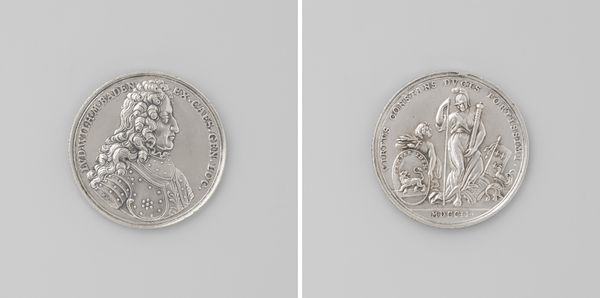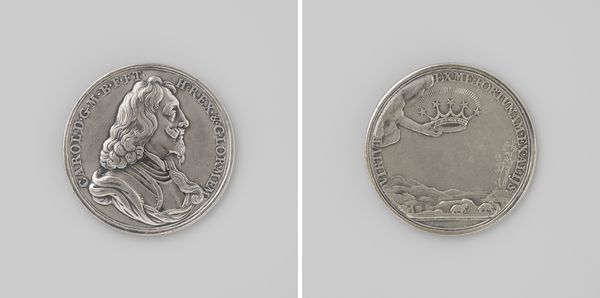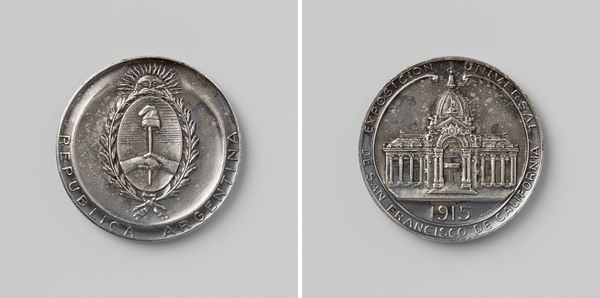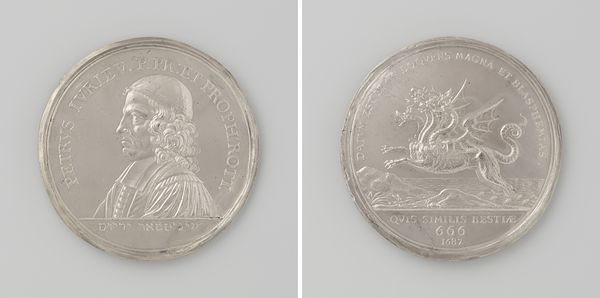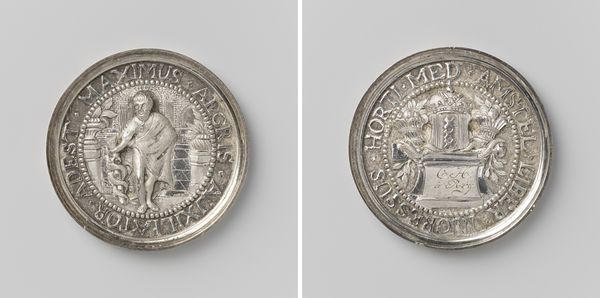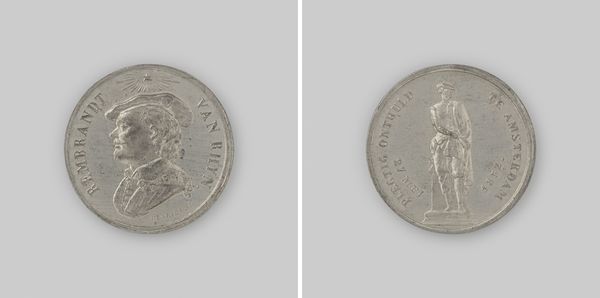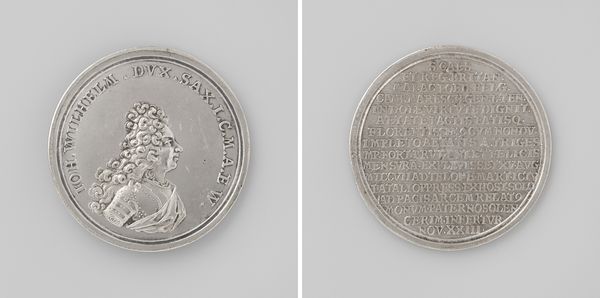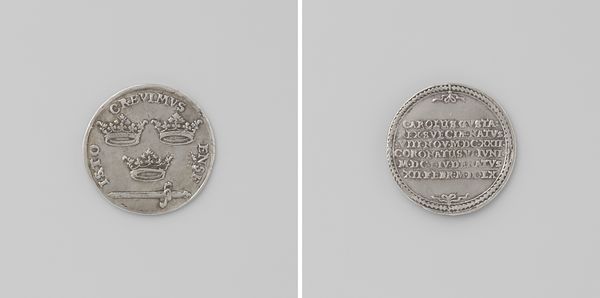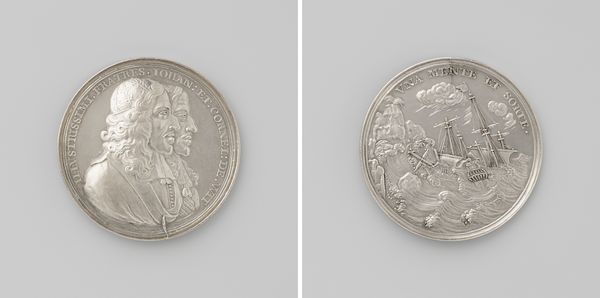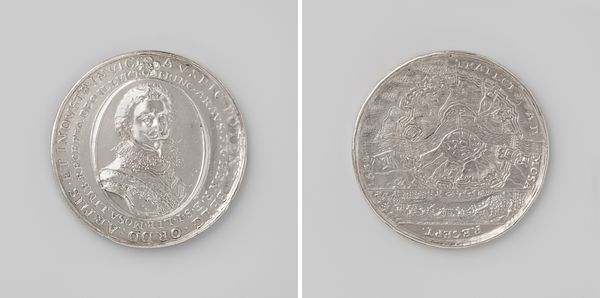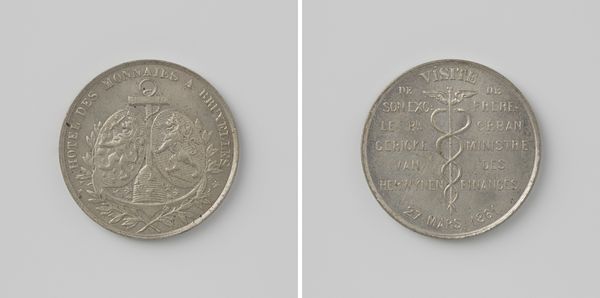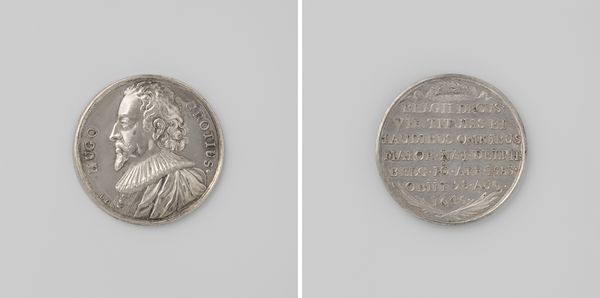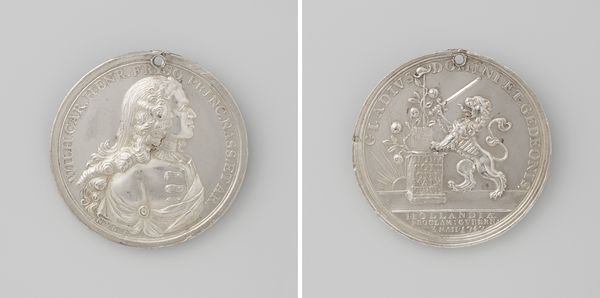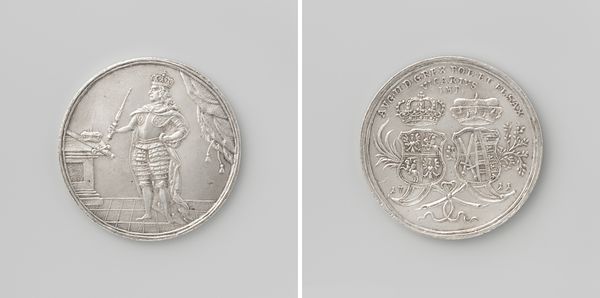
metal, sculpture
#
portrait
#
baroque
#
metal
#
sculpture
Dimensions: diameter 2.8 cm, weight 8.94 gr
Copyright: Rijks Museum: Open Domain
Curator: The texture of this piece immediately pulls me in, it’s like gazing into a monochrome dreamscape rendered in metal. Editor: That’s an interesting way to describe this object, let's delve into it further. This artwork, "Dood van Rene Descartes" which translates to "Death of Rene Descartes," is a baroque sculpture from around 1740, created by Jean Dassier. Curator: Death, yet immortalized in gleaming metal. It makes you wonder what narratives or symbolisms about power the artist tries to put forth about intellectual legacy and influence during the 18th century. Editor: I think that your interpretation about “power” makes an astute entrypoint into how portraiture like this worked at that time. Remember that philosophical and intellectual circles were shaping social discourse and sometimes in conflict with the established orders of Europe. Curator: Exactly. Consider Descartes's profound impact on epistemology and how his ideas continue to fuel contemporary discussions around being and existence. This piece feels like it memorializes not just a man, but a turning point in human thought. I notice also how his intellectual contributions may invite gendered interpretation too. Editor: I'm keen on the context and the artist's influences during the Enlightenment era when reason and science were at the forefront. And from a formal perspective, how Dassier utilizes metal to create light and shadow—almost capturing the dynamism inherent in Descartes’ philosophical explorations—suggests an effort to legitimize his social impact through his intellectual contribution. Curator: And how does it intersect with gender? We might read Descartes's ideas—particularly those on mind-body dualism—through a feminist lens. How does this frame further problematize identity and societal power in Baroque culture? It feels pertinent, even today. Editor: Indeed. Seeing this, I now appreciate that these intricate portrayals were not just about aesthetics or individual representation. But more of the circulation and the promotion of philosophy as it intersected with culture. Curator: Exactly, to delve deeper means we’re not just observing art; we are deciphering its power and ongoing societal relevance. Editor: I think I'm ready to explore how the artwork contributes to public discourse. Thanks!
Comments
No comments
Be the first to comment and join the conversation on the ultimate creative platform.
